
King Arthur, according to legends, was a king of Britain. He is a folk hero and a central figure in the medieval literary tradition known as the Matter of Britain.

Avalon is a mythical island featured in the Arthurian legend. It first appeared in Geoffrey of Monmouth's 1136 Historia Regum Britanniae as a place of magic where King Arthur's sword Excalibur was made and later where Arthur was taken to recover from being gravely wounded at the Battle of Camlann. Since then, the island has become a symbol of Arthurian mythology, similar to Arthur's castle of Camelot.

The Matter of Britain is the body of medieval literature and legendary material associated with Great Britain and Brittany and the legendary kings and heroes associated with it, particularly King Arthur. The 12th-century writer Geoffrey of Monmouth's Historia Regum Britanniae is a central component of the Matter of Britain.

Le Morte d'Arthur is a 15th-century Middle English prose reworking by Sir Thomas Malory of tales about the legendary King Arthur, Guinevere, Lancelot, Merlin and the Knights of the Round Table, along with their respective folklore. In order to tell a "complete" story of Arthur from his conception to his death, Malory compiled, rearranged, interpreted and modified material from various French and English sources. Today, this is one of the best-known works of Arthurian literature. Many authors since the 19th-century revival of the legend have used Malory as their principal source.
Morgause is a popular variant of the figure of the Queen of Orkney, an Arthurian legend character also known by various other names and appearing in different forms of her archetype. She is notably the mother of Gawain and often also of Mordred, both key players in the story of her brother King Arthur and his downfall.
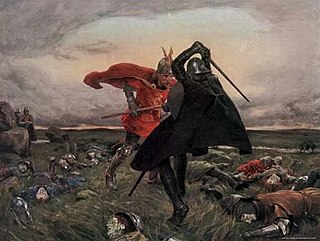
The Battle of Camlann is the legendary final battle of King Arthur, in which Arthur either died or was mortally wounded while fighting either alongside or against Mordred, who also perished. The original legend of Camlann, inspired by a purportedly historical event said to have taken place in the early 6th-century Britain, is only vaguely described in several medieval Welsh texts dating from around the 10th century. The battle's much more detailed depictions have emerged since the 12th century, generally based on that of a catastrophic conflict described in the pseudo-chronicle Historia Regum Britanniae. The further greatly embellished variants originate from the later French chivalric romance tradition, in which it became known as the Battle of Salisbury, and include the 15th-century telling in Le Morte d'Arthur that remains popular today.
Ingenius is a legendary king of the Britons as recounted by Geoffrey of Monmouth's pseudohistorical work Historia Regum Britanniae, written c. 1138 CE. Ingenius was the fourth son of King Morvidus and the brother of Gorbonianus, Archgallo, Elidurus, and Peredurus. He came to power in 317BC.

The Warlord Chronicles or The Warlord Trilogy is a series of three novels about Arthurian Britain written by Bernard Cornwell. The story is written as a mixture of historical fiction and Arthurian legend. The books were originally published between 1995 and 1997 by Penguin and Michael Joseph in the United Kingdom and by St. Martin's Press in the United States. It has been adapted for television as The Winter King.
Logres is King Arthur's realm in the Matter of Britain. The geographical area referred to by the name is south and eastern England. However, Arthurian writers such as Chrétien de Troyes and Wolfram von Eschenbach have differed in their interpretations of this.
Perceforest or Le Roman de Perceforest is an anonymous prose chivalric romance, written in French probably around 1340 with lyrical interludes of poetry, that describes a fictional origin of Great Britain and provides an original genesis of the Arthurian world. The lengthy work in eight volumes takes its inspiration from the works of Geoffrey of Monmouth, Wace, Orosius and Bede, the Lancelot-Grail cycle, the Alexander Romance genre, Roman historians, medieval travellers, and oral tradition. Perceforest forms a late addition to the collection of narratives with loose connections both to the Arthurian Romance and the feats of Alexander the Great.

Rusalka is a fantasy novel by American science fiction and fantasy author C. J. Cherryh. It was first published in October 1989 in the United States in a hardcover edition by Ballantine Books under its Del Rey Books imprint. Rusalka is book one of Cherryh's three-book Russian Stories trilogy set in medieval Russia in forests along the Dnieper river near Kyiv in modern-day Ukraine. The novel draws on Slavic folklore and concerns the fate of a girl who has drowned and becomes a rusalka. It is also an exploration of magic and the development of a young wizard.
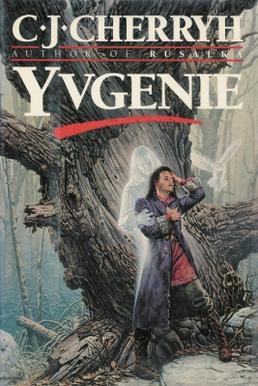
Yvgenie is a fantasy novel by American science fiction and fantasy author C. J. Cherryh. It was first published in October 1991 in the United States in a hardcover edition by Ballantine Books under its Del Rey Books imprint. Yvgenie is book three of Cherryh's three-book Russian Stories trilogy set in medieval Russia in forests along the Dnieper River near Kyiv in modern-day Ukraine. The novel draws on Slavic folklore and concerns the fate of a girl who has drowned and become a rusalka. It is also an exploration of magic and the development of a young wizard.
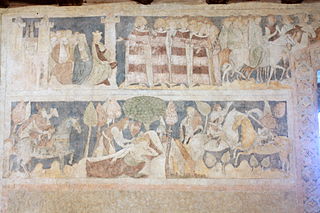
The Lancelot-Grail Cycle, also known as the Vulgate Cycle or the Pseudo-Map Cycle, is an early 13th-century French Arthurian literary cycle consisting of interconnected prose episodes of chivalric romance originally written in Old French. The work of unknown authorship, presenting itself as a chronicle of actual events, retells the legend of King Arthur by focusing on the love affair between Lancelot and Guinevere, the religious quest for the Holy Grail, and the life of Merlin. The highly influential cycle expands on Robert de Boron's "Little Grail Cycle" and the works of Chrétien de Troyes, previously unrelated to each other, by supplementing them with additional details and side stories, as well as lengthy continuations, while tying the entire narrative together into a coherent single tale.

Brocéliande, earlier known as Brécheliant and Brécilien, is a legendary enchanted forest that had a reputation in the medieval European imagination as a place of magic and mystery. Brocéliande is featured in several medieval texts, mostly these related to the Arthurian legend, as well as in numerous modern works.
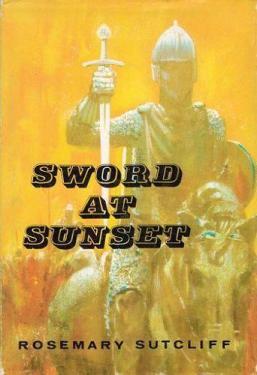
Sword at Sunset is a best-selling 1963 novel by Rosemary Sutcliff. One of her few historical novels written specifically for adults, it is her interpretation of the legend of King Arthur.

Fire and Sword is a 1981 romantic drama film directed by Veith von Fürstenberg. It is based on the legend of Tristan and Isolde, played by Christoph Waltz and Antonia Preser. Leigh Lawson and Peter Firth also star. Set during a raging war between Cornwall and Ireland, the film explores themes on conflict between magic and religion, violence, and destruction.

The Russian Stories, also known as the Russian Series, the Russian Trilogy and the Rusalka Trilogy, are a series of fantasy novels by science fiction and fantasy author C. J. Cherryh. The stories are set in medieval Russia along the Dnieper river, in a fictional alternate history of Kievan Rus', a predecessor state of modern-day Russia, Belarus and Ukraine. The three books in the series are Rusalka (1989), Chernevog (1990), and Yvgenie (1991). Rusalka was nominated for a Locus Award in 1990.

Eugène Vinaver was a Russian-born British literary scholar who is best known today for his edition of the works of Sir Thomas Malory.
Raymond H. Thompson is a Canadian scholar of medieval literature specializing in King Arthur and the Matter of Britain, and in the reinterpretation of this material in modern literature. He is a professor emeritus in the Department of English at Acadia University in Canada.
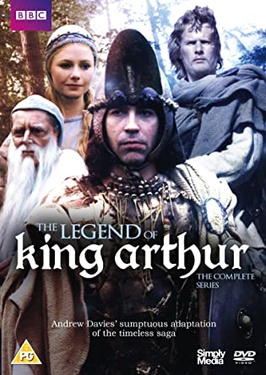
The Legend of King Arthur is a British television fantasy serial, produced by the BBC in association with Time-Life Television and the Australian Broadcasting Commission, and broadcast on BBC 1 in 1979.













